Renovating Highdown Gardens’ water feature
Hi, Toby Craft Gardener here, updating you on work at Highdown.
The recent donation from the National Lottery Heritage Fund has brought many benefits to the garden, but unfortunately the water feature was not included in the works.
Due to the cost of running it and the difficulty of restoring it, combined with the complexity of the Heritage grant application, meant the waterfall became a bridge too far and the sad decision was taken to stop the flow.
Thankfully, a generous spirit in the community surfaced and offered us a very generous cash donation to keep our waterfall dream afloat.
About five years ago a brilliant couturier was starting his own design studio and shot a fashion shoot in the gardens, his imagination enchanted with the garden – that day remains with him a wonderful memory.
Then, on a chance visit, one afternoon two years ago, he spoke with the gardeners and learnt the sad fate of the waterfall. He was determined for us not to be left a drop in the ocean and wanted to help turn the tide.
Originally, when Sir Frederick Stern first constructed the waterfall nearly 100 years ago, the water that fed the feature came from a natural chalk spring on the downs near Highdown hill, which fed both the house and the gardens.
Photo: The water flows once again down the historic water feature next to the waterfall steps
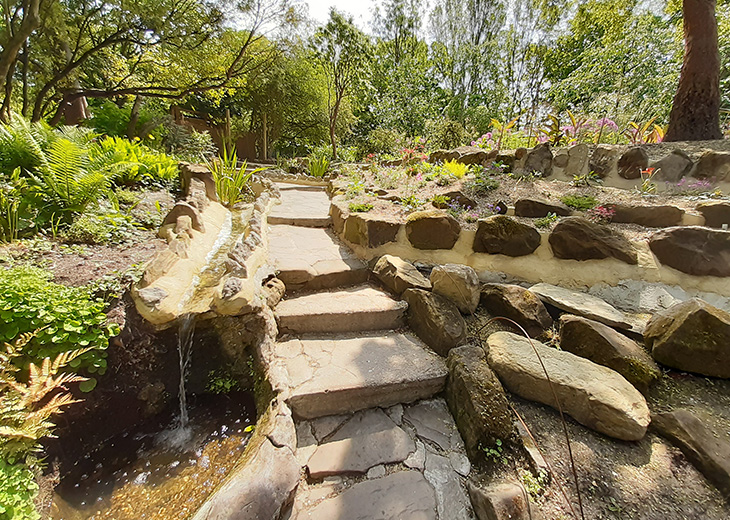
The spring water flowed in a pipe to the bottom of the hill and was then pumped back up under pressure to the water feature by a diesel generator, located where there is now a sports field.
The head gardener of the time, John Bassindale, first job of the day was to start up the generator, to pump up water for the daily needs of a large and sophisticated garden.
The water flowed like this until, one day the water board built a reservoir on the downs, and the house and garden were put on to the mains system, meaning the waterfall would now be fed by mains water.
At a time when water was cheap and plentiful, running a ‘total loss’ system, where water is run through and not recycled, was deemed a reasonable solution, however, as we all know now fifty years later, everything has changed and water is anything but cheap and plentiful.
But technology has also changed. And Highdown Gardens have embraced the change.
We have imagined, designed, and built a sustainable, alternative solution that both honours our heritage roots, all the while staying true to Sir Frederick Stern’s spirit of innovation.
The Solar Pagoda
An off grid solar system which harnesses the sun to power a heavy-duty pump, this recycles the pond water five metres up to the header tank, and lets gravity take it down the fall, once again reviving the elemental sound of running water.
With zero inputs this clean energy system will bring joy and happiness to the thousands of visitors who enjoy the garden ponds each year, without, literally, pouring money down the drain…
But we cannot take all the credit for this achievement ourselves. For crucially, not without the invaluable help of a big group of generous, intelligent, skilful, and kind individuals who we must give credit to…
We are blessed with some first-rate businesses locally who contributed their specialist services and products to make it all possible.
On top of the magnificent pagoda structure, constructed by 4M Landscape contractors of Heene, sit the Sun Store solar panels, the solar experts from Goring helped us calculate how much battery power we’d need for the pump and then designed and fitted their custom system.
Photo: The Solar Pagoda houses the panels and batteries to power the pump
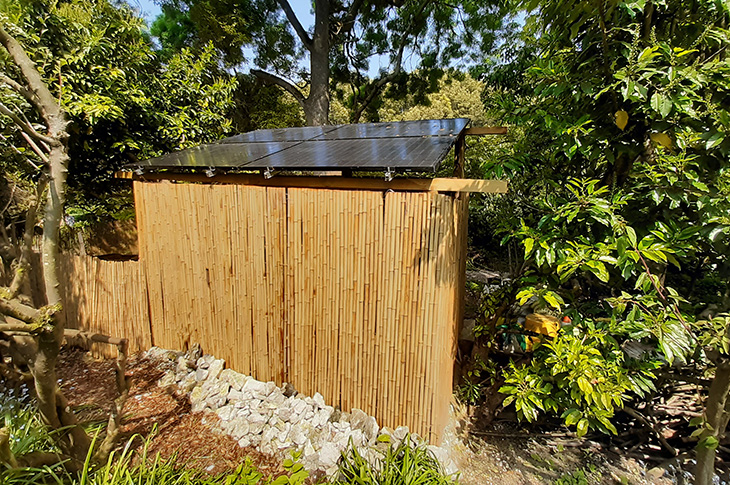
We then got Active Pumps from Ford to fit the pump, hoses, and controller. But all their hard work is now buried under the ground or hidden out of sight, busying away in the background, a bit like us gardeners.
The Horsham Stone, as originally mentioned in Stern’s book ‘A Chalk Garden’ has been used again, this is from a cretaceous river bed and has fossilised ripples in the stone. There is even a fossilised log which now sits atop of the fall.
Photo: A fossilised log sits atop the fall in a piece of Horsham stone
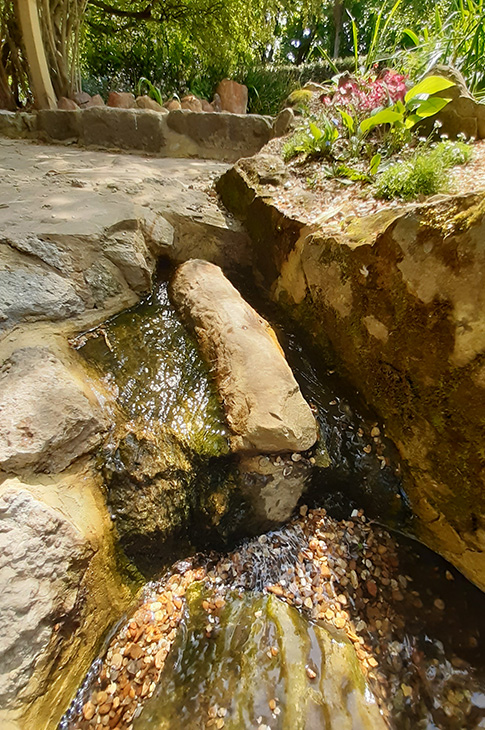
All this stone is cemented into place with heritage lime mortar, and with chalk being the primary ingredient of cement, it is very apt that all this heavy laborious work in the chalk pit was fed by a constant supply of building materials from our reliable, trusted suppliers Gardner Scardifield.
We’ve used heritage Winklestone/Sussex marble, reclaimed thanks to St Mary’s Church, Thakeham, to enhance the nature pools. Look closely at the stone and you will see fossilised remains of small snails trapped in time.
Photo: Sussex marble/winklestone embedded with fossilised snails
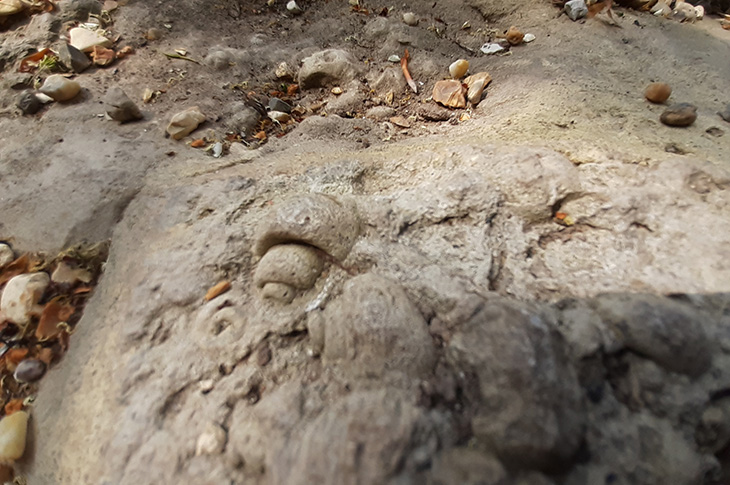
Thanks to Roger Cordiner, author of Sussex Building Stone, who shared his specialist knowledge with us to help better understand these fascinating local materials.
At the bottom of the fall, the water flows into the pond and into a grotto. Formerly a lime kiln for burning chalk into agricultural lime, this cave feature grotto was previously dark and slightly foreboding.
But no more, thanks to a light system shining on a spectacular large Himalayan Quartz geode crystal, which was also given by the donor, now our shimmering jewel in the Highdown crown. This is very appropriate as Sir Frederick collected plants widely from the Himalaya as their growing conditions were similar to Highdown’s.
The Zaeem Crystal sits elegantly atop a bespoke Corten steel water bowl, made by Outdoor Design also of Ford. This bowl fills and falls with water, evoking the spirit with the mystical, tinkling sound of flowing water.
Photo: The Zaeem Crystal is a spectacular Himalayan Quartz geode
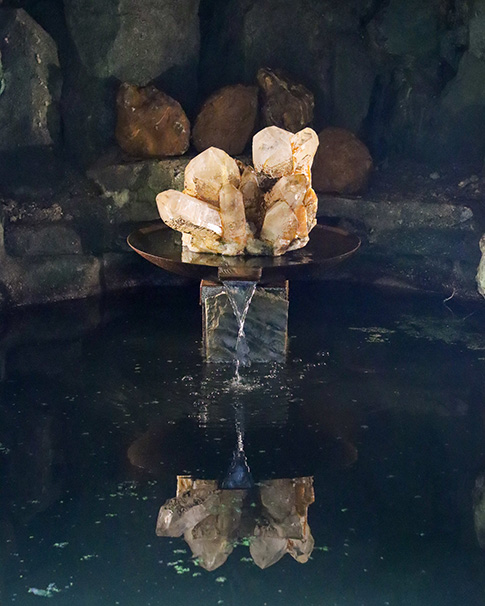
We’re also blessed with a wonderful hardworking group of volunteers, who show up week in week out and were a massive help for a large proportion of the manual labour involved.
Also, a special mention goes to Phil Jones, a retired electrical engineer from the Friends of Marine Gardens group, who first helped us develop this ambitious scheme.
But back to the garden, the waterfall flowed through the rockery which was Stern’s original alpine garden. We’ve now replaced some of the many plant genera and species he collected, which had been long lost, but have been researched, sourced and replaced by our Plant Heritage Officer.
This stunning collection of jewellike flowers sparkle in the spring and summer sunshine, and play out their garden theatre atop their stage of stone.
Photo: Newly planted alpine plants adorn the rockery like jewels
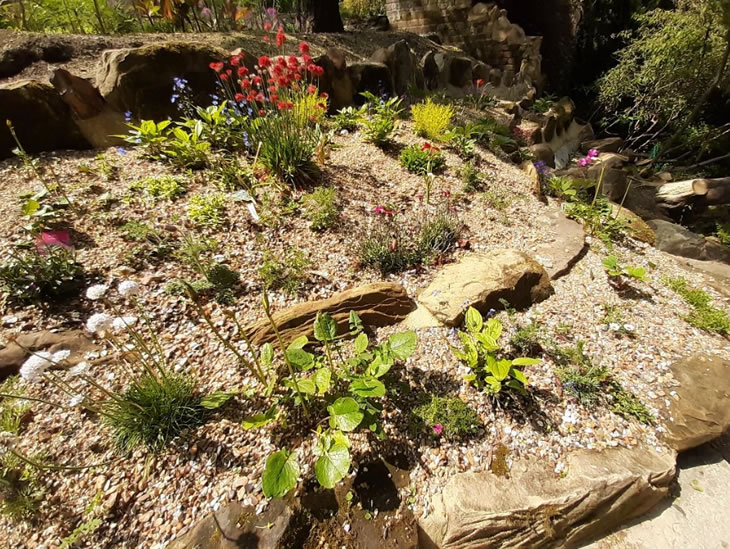
As much as we’d like to say the job is finished (though gardening never is) if you descend the steps, you’ll notice the bottom half is yet to be renovated.
But given the time and resources we, with Worthing Borough Council’s commitment to our green spaces, can continue this fine work and return the gardens to their former glory.
I’ll stop spouting on now and just say we’re looking forward to you all streaming in to see for yourselves!